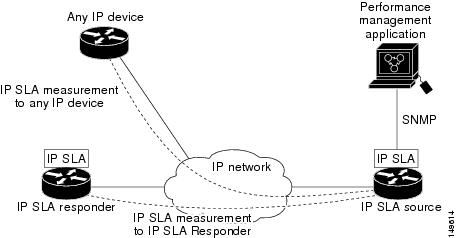The IP SLA Responder
must be enabled on the target device, which is the operational target.
By configuring the
ipsla responder
command, you make the IP SLA Responder open a UDP port 1967 and wait for a
control request (not for probes). You can open or close a port dynamically
through the IP SLA control protocol (through UDP port 1967). In addition, you
can configure permanent ports.
Permanent ports are
open until the configuration is removed. Agents can send IP SLA probe packets
to the permanent port directly without a control request packet because the
port can be opened by the configuration.
If you do not use
permanent ports, you have to configure only the
ipsla responder
command.
To use a dynamic
port, use the
ipsla responder
command, as shown in this example:
configure
ipsla responder
The dynamic port is
opened through the IP SLA control protocol on the responder side when you start
an operation on the agent side.
The example is
configured as a permanent port on the responder.
UDP jitter can use a dynamic port or a permanent port. If you use
a permanent port for UDP jitter, there is no check performed for duplicated or
out-of-sequence packets. This is because there is no control packet to indicate
the start or end of the probe sequence. Therefore, the verification for
sequence numbers are skipped when using permanent ports.





 Feedback
Feedback